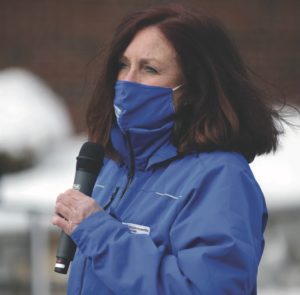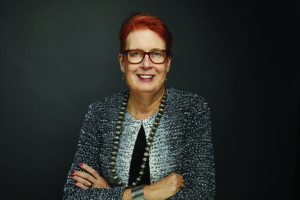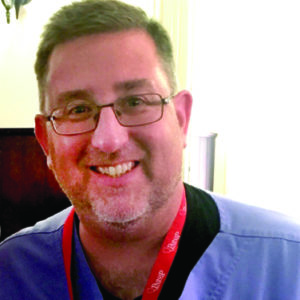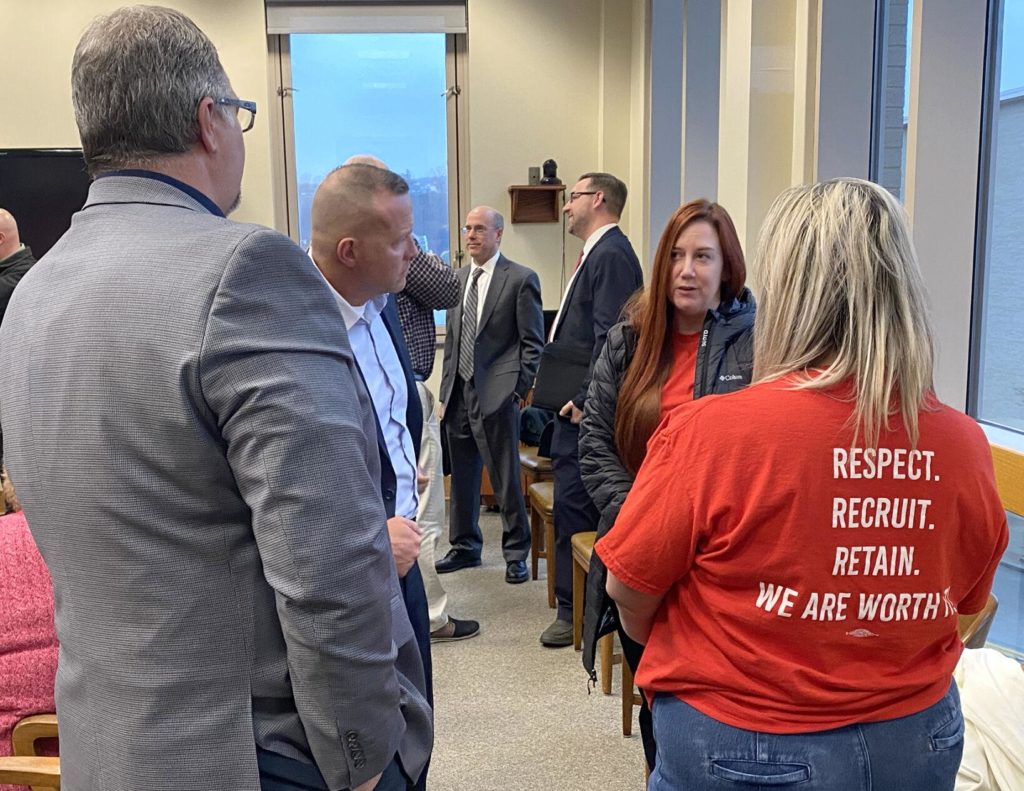Irish Americans Confront U.S. Nursing Shortage

Dr. Linda Flynn knows all too well that the COVID pandemic placed a tremendous strain on nursing staffs across the U.S.
“There was so much burnout,” explains Flynn, a Washington D.C.-area native, who now serves as dean of the School of Nursing at Rutgers University.
“There’s only so much trauma, and death and dying (nurses) can take.”
But an important, unintended by-product of the pandemic, Flynn adds, is that the “public got a real glimpse of what nurses do, and how they contribute to people’s lives every day.”
Flynn – and other Irish Americans working across the nursing field – say this could be an important first step in confronting what many have called a “crisis” in American health care.
Amidst yet another COVID uptick this past summer, The New York Times reported: “American hospitals are once again filling up with coronavirus patients – but not with nurses to care for them. The nation’s chronic shortage of registered nurses is as bad in some parts of the country as it has ever been…and it is showing signs of getting worse.”
Many Causes

Katie Murphy, a registered nurse for 40 years in Boston, argues that there is technically no “shortage” of nurses.
“That’s a myth,” adds Murphy, president of the Massachusetts Nursing Association union (MNA), whose grandparents came from Mayo.
“What there is,” adds Murphy, “is a shortage of nurses willing to work under these conditions.”
However you describe it, many health care professionals worry that patients are not receiving the level of care they need.
“We’re being asked to do more with less,” said Pat Kelly, an ICU nurse at North Philadelphia’s Einstein Medical Center. “You don’t feel like you can care for your patients the way they need to be cared for.”
The Coronavirus epidemic highlighted and exacerbated these challenges.
“After a year and a half of watching people die,” one Jersey Shore Medical Center nurse told the Newark Star-Ledger in July, “I couldn’t do it anymore.”
Dr. Eileen Sullivan-Marx, an Irish American professor at NYU’s Rory Meyers College of Nursing, noted that even before COVID, this serious problem had multiple, complex causes.
“Nurses care for patients 24/7 and are the only healthcare providers who tend to patients around the clock,” said Sullivan-Marx. “The need for nurses can grow very quickly depending on the nature of a crisis – and nurses rise up.”
Challenging Job Conditions
CNN recently noted that “as the virus ravages America’s health care system, it is illuminating – and worsening – the country’s national shortage of nurses,” adding: “Some nurses have abandoned a workplace where conditions have become harder to endure, with impossibly high patient loads and even a shocking uptick in workplace violence. Others have quit their jobs to become travel nurses, staffing bedsides around the country on a temporary basis, and for as much as triple their usual pay.”
MNA’s Murphy said that other nurses have become so overwhelmed by challenging work conditions that they go back to school to receive additional or different credentials. Others seek different career paths within health care.
“Either way,” adds Murphy, “they’re leaving the bedside.”
Broader social factors are also contributing to these challenges.
Longer life expectancies, generational occupation trends, and even stubborn gender expectations have also contributed to shifts in American nursing.
Observers add that while there are some reasons to be cautiously optimistic, these challenges could just as easily prove to be stubbornly difficult to solve.
“It really is a crisis,” said Flynn.
An Exodus
Broadly speaking, of course, improved medical care and longer life spans are a good thing. But these also lead to greater demand for nurses and related personnel and services.
“You can see a growing rise in demand such as we have been having in the U.S. and in many Western countries as the population ages,” Sullivan-Marx notes, while Flynn added: “We’ve been seeing these predictions for years.”
The influx of nurses from the large Baby Boomer generation has recently aged to become an exodus of retirees.
“The generations that followed were smaller in number and fewer persons entered nursing for a lifetime career,” Sullivan-Marx said, though she added “a surge from the millennial generation” and Gen Z could make up for that down the road.
“The good news is applications are up among the young,” says Flynn.
At the moment, though, that leaves a “gap between those in retirement age and those who are just entering careers…. We have fewer nurses between the ages of

40 and 60,” according to Sullivan-Marx.
Pat Kelly adds: “We need to do a better job retaining experienced nurses.”
Another problem, MNA’s Murphy believes, is that too many hospitals are more concerned with increasing the number of patients in beds, rather than the number of nurses working to care for them properly.
“If they can get by with four nurses on a shift, and not five, they’ll do it,” Murphy notes. “You end up with (not enough nurses) to get people up and out of bed. You end up with patients developing pneumonia, developing blood clots…You really see poorer patient outcomes.”
Outside The Box
Some believe new approaches to nurse training might also ease some of the problems that have arisen.

“That’s what is missing – thinking outside the box,” said Pat Kelly, who works for the nurses’ union at his own hospital, and is also a vice president for the Pennsylvania Association of Staff Nurses and Allied Professionals.
Recruiting can, and should, start in high schools, Kelly adds, among males, and other students who may not traditionally consider nursing careers.
Others believe technology can be used to improve the quality of patient care, though they add that it won’t replace the benefits of a dedicated human nurse.
“It’s still one of the best jobs in the world,” says Murphy, who describes herself as “cautiously optimistic” about the future, believing that the pandemic made the consequences of insufficient nurse staffing painfully clear.
Even with these challenges, Irish-American nurses say the benefits far outweigh the drawbacks.
“I still love what I do,” says Kelly, who works not far from where he grew up.
“I’m stubborn. I refuse to leave. I can be a voice to fix the problems.” ♦


Tom Deignan’s article “It Really is A Crisis, touched me for many reasons. I found the solutions thought provoking. But there are other fields facing the same crisis. I am a retired teacher for the Blind and Visually Impaired. We are also facing a severe shortage. A group of us, who are retired, have formed VI AmBADASSadors for recruitment. We attend college and graduate job fairs. But I like the idea of also including High Schools. Thank you for bringing attention to this matter.